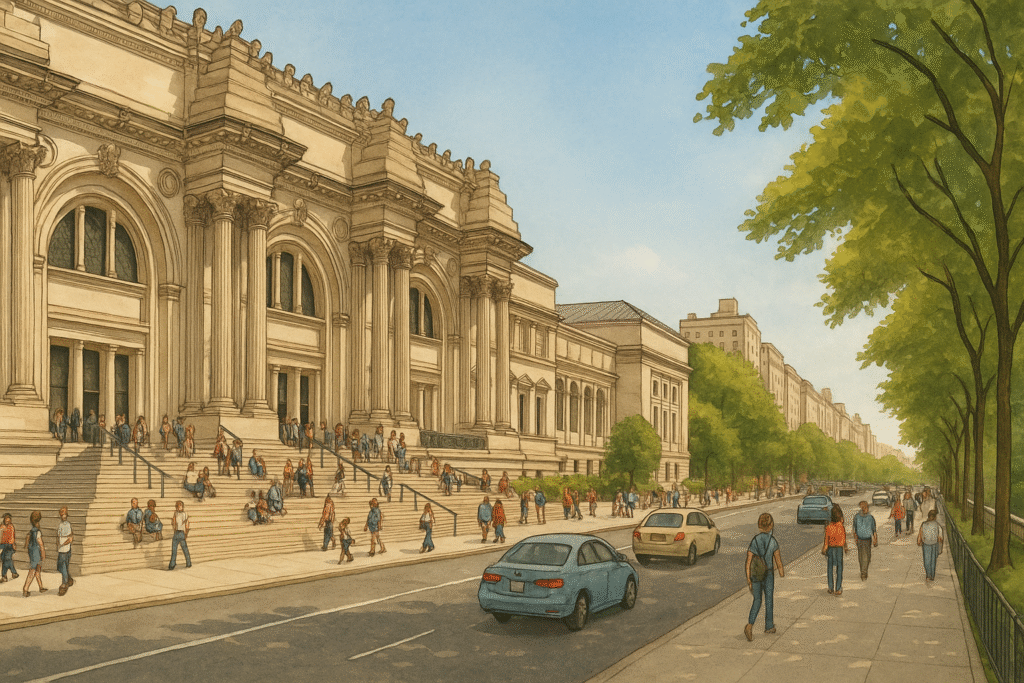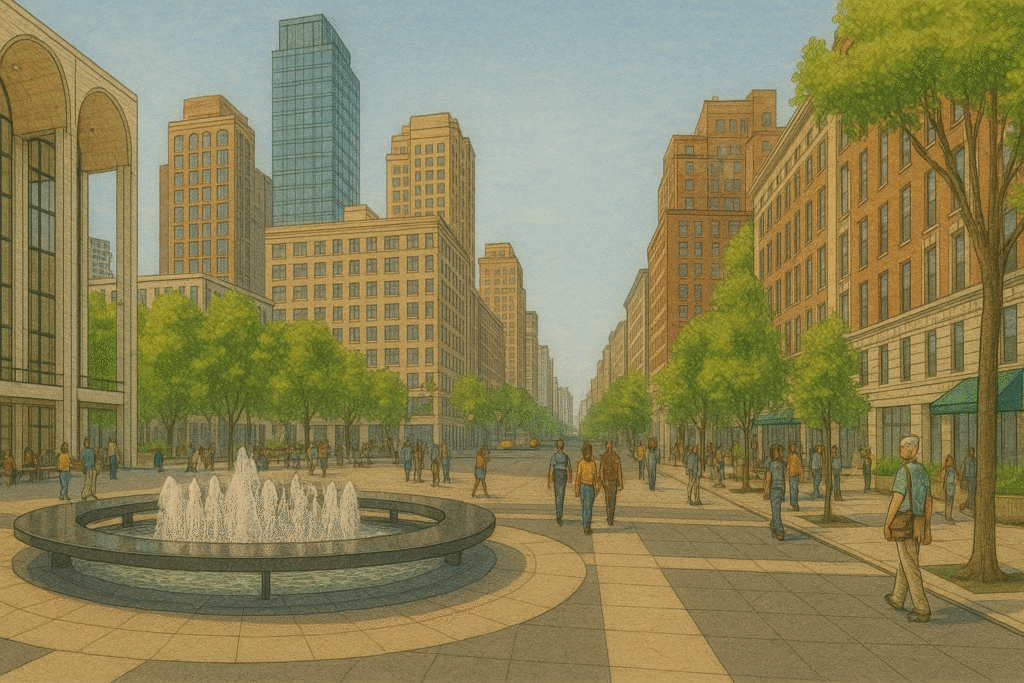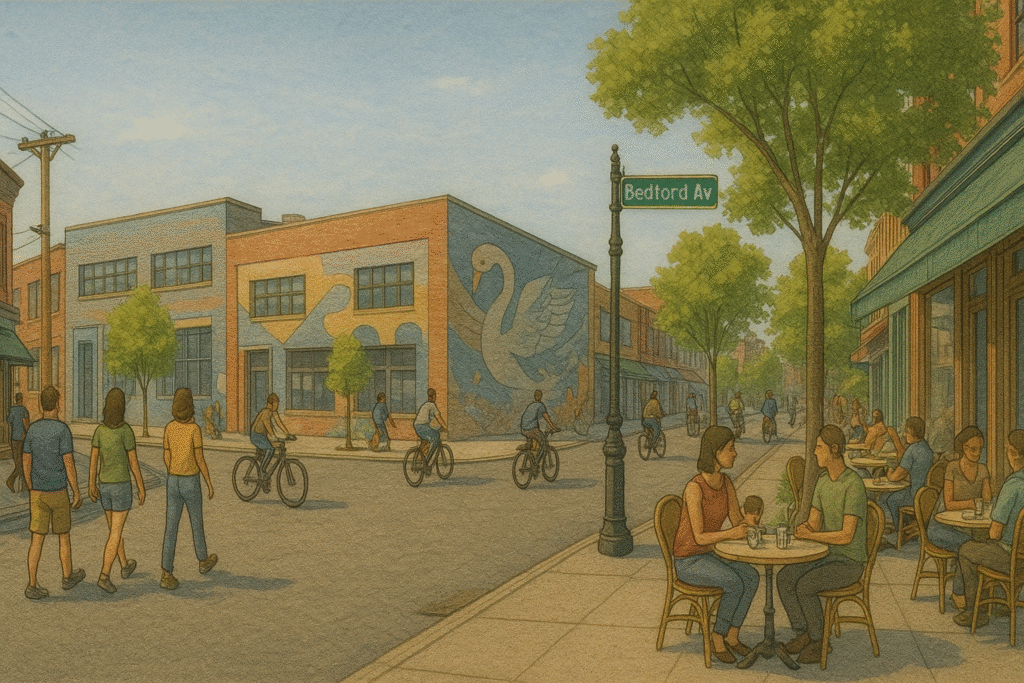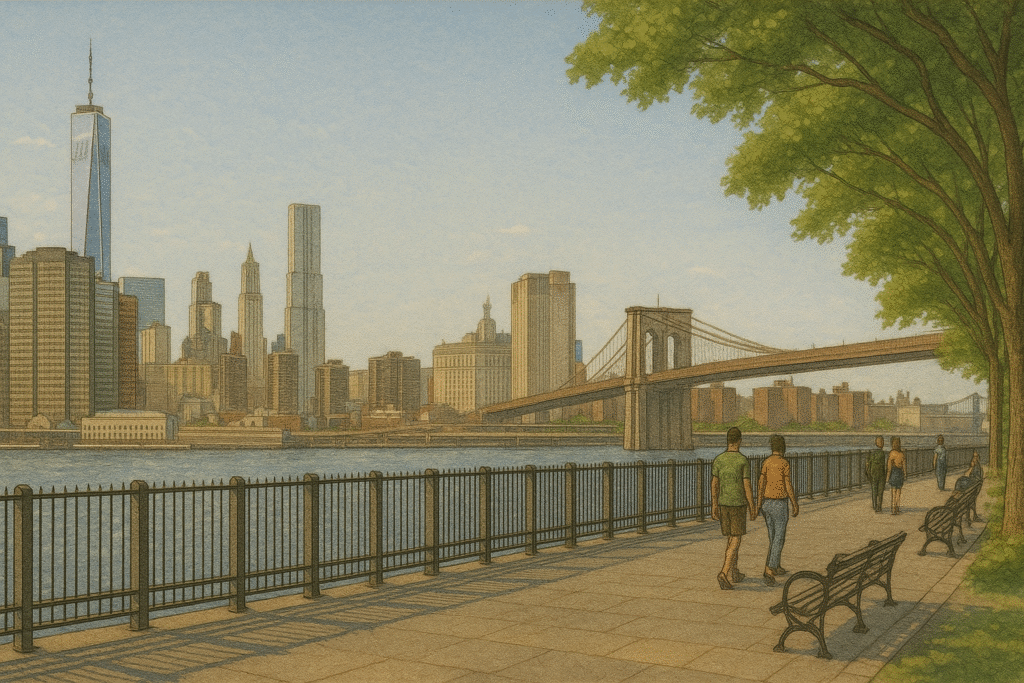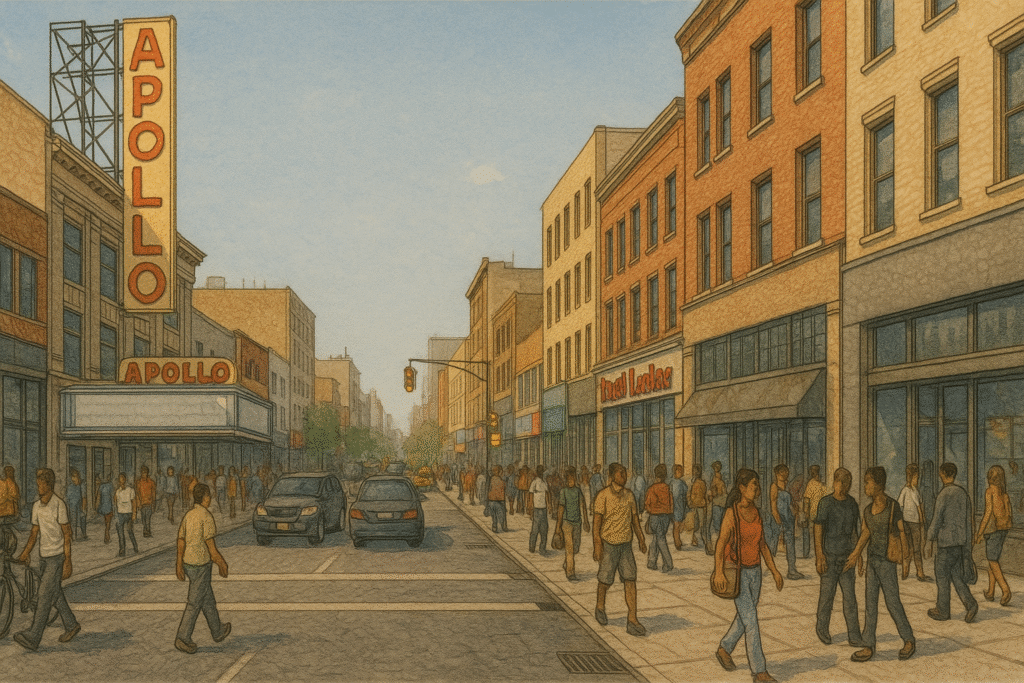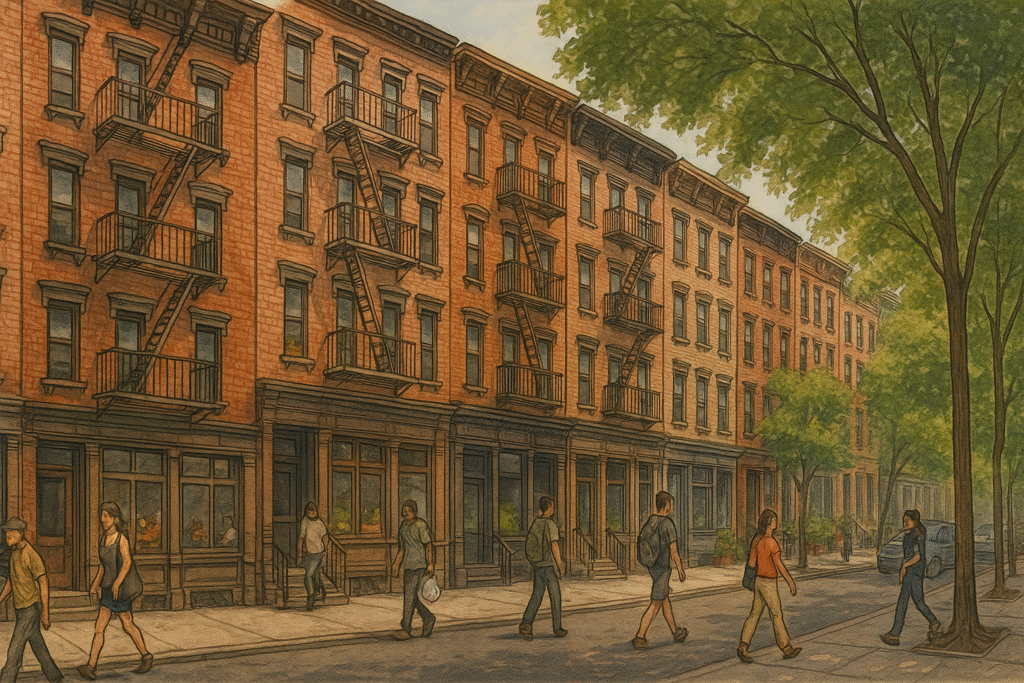New York presents itself directly. Its landmarks do not fade into the background. They shape the pace of the streets and the lines of the sky. Each one serves a clear role in how people move, gather, and remember.
These buildings stand through change. They offer something steady in a city that always moves. They are made to be used, but also to be noticed. Some rise above the skyline. Others hold their place among taller structures. Each one helps define what it feels like to be here.
This piece focuses on four of them. The Empire State Building shows how high the city reaches. The Chrysler Building adds shape and detail to that rise. Grand Central Terminal organizes motion in the middle of rush. St. Patrick’s Cathedral creates space for pause and reflection. These places are part of daily life, but they carry something lasting.
The Empire State & the Art of Aspiration
The Empire State Building doesn’t blend into the skyline—it defines it. Its shape climbs in clean steps to a sharp point, topped by a spire that still draws eyes upward from blocks away. Tourists and locals both use it to get their bearings. It tells you where you are.
Construction started in 1930 and finished in just over a year. That speed still feels impossible. It opened during a national crisis, yet aimed higher than almost any building of its time. It became a statement the city never stopped making.
Two observatories are open to the public. On the 86th floor, you step into open air and walk around the entire building. You can spot the Chrysler Building to the north, the Statue of Liberty to the south, and bridges stretching out in every direction. On the 102nd floor, windows wrap around a quiet viewing space that feels suspended in the sky.
You’ve seen it in films. You’ve seen it on T-shirts. But nothing compares to stepping inside and rising floor by floor until the city drops away. The Empire State Building still delivers what people come to New York looking for—height, movement, and a view they’ll talk about for the rest of their lives.
The Chrysler Building — Steel and Grace
The Chrysler Building is not open to tourists at the top. That doesn’t stop people from admiring it. Every photo of Manhattan’s skyline seems to feature its crown. It stands lower than the Empire State Building and draws a different kind of attention. Many pause just to take it in.
It opened in 1930 as the headquarters for Chrysler. Automotive elements are built into the design. On the 31st floor, the metal gargoyles resemble classic hood ornaments. Winged details and stylized corners suggest speed and precision.
Its crown is layered in metal arches that catch the light. During the day, the surface reflects the sky. At night, lights outline the spire and give the top a glow visible from across the East River. The lobby inside holds a mural ceiling and polished stone. The design reflects the Art Deco era when it was built.
This is a building most people never enter. That hasn’t hurt its place in the city’s story. From the sidewalk or a window across town, the Chrysler Building leaves a lasting mark.
Grand Central Terminal — Civic Theater in Motion
Grand Central Terminal feels like a place designed to be remembered. People come to catch a train, grab a meal, or pass through. Many stop and look up.
The Main Concourse stretches wider than most expect. The ceiling is painted with constellations—zodiac signs and stars, mapped in gold. Along the walls, arched windows cast light over the marble floor. The information booth at the center holds a four-faced brass clock, a common meeting point for people who still say, “Let’s meet at the clock.”
The terminal opened in 1913. Its design blends function with ceremony. Trains run beneath the main level on multiple tracks. Escalators and corridors guide visitors toward subways, platforms, and shops. Every part of the space supports movement. Yet the design slows people down, at least for a moment.
Even during rush hour, it offers order. Light, sound, and space work together to direct attention without force. Travelers may pass through once or every day, but almost all remember the first time they looked up.
Grand Central Terminal doesn’t compete with the skyline. It holds its ground on the street. Inside, it reminds visitors that motion can still feel composed.
Grand Central Terminal — Civic Theater in Motion
Grand Central Terminal feels like a place designed to be remembered. People come to catch a train, grab a meal, or pass through. Many stop and look up.
The Main Concourse stretches wider than most expect. The ceiling is painted with constellations—zodiac signs and stars, mapped in gold. Along the walls, arched windows cast light over the marble floor. The information booth at the center holds a four-faced brass clock, a common meeting point for people who still say, “Let’s meet at the clock.”
The terminal opened in 1913. Its design blends function with ceremony. Trains run beneath the main level on multiple tracks. Escalators and corridors guide visitors toward subways, platforms, and shops. Every part of the space supports movement. Yet the design slows people down, at least for a moment.
Even during rush hour, it offers order. Light, sound, and space work together to direct attention without force. Travelers may pass through once or every day, but almost all remember the first time they looked up.
Grand Central does not rise above the city. It stands at eye level, built to gather movement and guide it without distraction. Its presence begins at the curb and unfolds as people step inside.
St. Patrick’s Cathedral — Stillness in Stone
Fifth Avenue moves quickly, but just across from the busy flags and storefronts of Rockefeller Center, St. Patrick’s Cathedral holds a different pace. Its twin spires rise above the street, drawing attention without sound. Visitors slow down before they even step inside.
The cathedral opened in 1879, built in the Gothic Revival style with pointed arches, stained glass, and a marble facade. The space inside feels open and tall. Columns rise toward the ceiling in quiet repetition. Light filters through deep-colored windows that tell stories in glass.
At the front, the bronze doors lead to a high altar backed by a sculpted canopy. Smaller chapels line the outer walls, each set apart by gates or candles. People stop here for different reasons—tourists, workers, locals on their way somewhere else. Some walk through with cameras. Others sit in silence.
The space doesn’t speak loudly. Its design guides the eye toward the ceiling, then toward the front. Movement becomes measured without instruction. Even visitors who don’t plan to stay often linger longer than expected.
St. Patrick’s Cathedral offers more than architecture. It creates a pause in the city’s rhythm, shaped in stone but felt in time.
Why These Places Matter
Travelers come to New York with certain images already in mind. Many have seen these buildings before ever setting foot in the city. But what surprises most visitors is not just how these landmarks look, but how they function—as orientation points, conversation starters, places to pause, or places to move through with purpose.
The Empire State Building rises to meet expectation. The Chrysler Building delivers detail and shape from a distance. Grand Central Terminal organizes thousands of moving parts without losing clarity. St. Patrick’s Cathedral shifts the pace of a block with little more than open doors and stained glass. Each one carries part of the city’s identity in structure, location, and experience.
These places don’t compete with one another. They work together. They give the traveler reference points—not just for geography, but for memory. Whether this is a first trip or one of many, these landmarks leave a mark that lasts long after the visit ends.

The Street Sign
The Street Sign points the way to where things are — the parks, restaurants, museums, and everything else. These guides are built to save you time and energy. Need a plan for an NYC outing? Follow The Street Sign.

